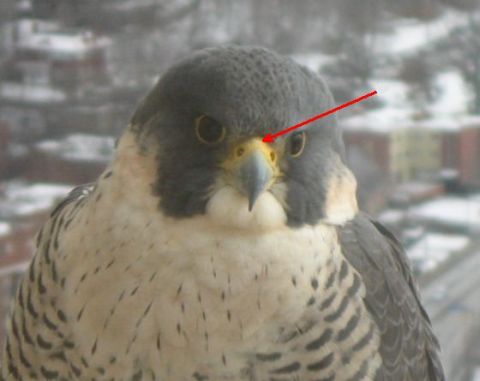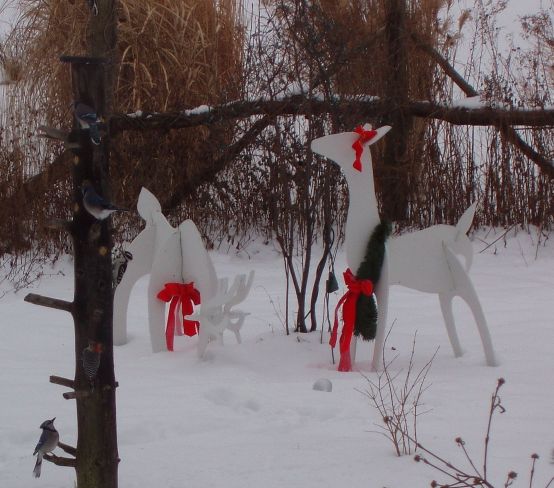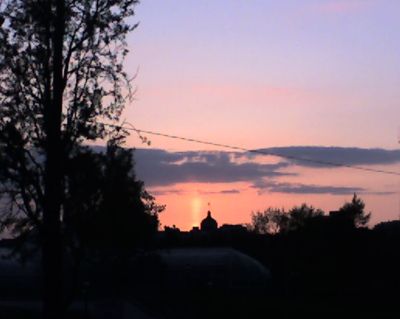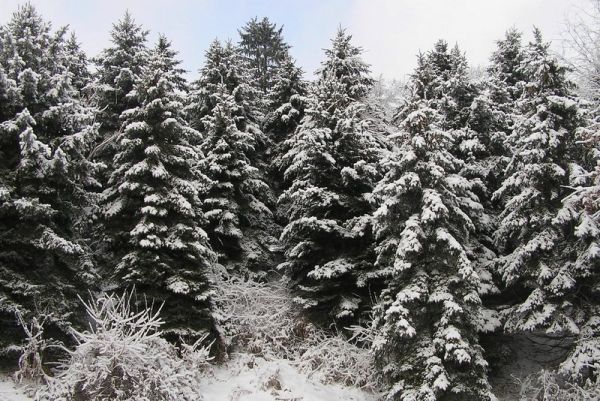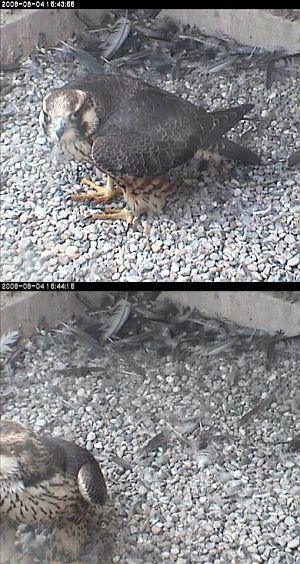 Back in 2008 when he was only three months old this young peregrine seemed reluctant to leave Pittsburgh.
Back in 2008 when he was only three months old this young peregrine seemed reluctant to leave Pittsburgh.
Peregrine falcons born at the Cathedral of Learning normally become scarce by mid July. Telemetry data from the Gulf Tower indicates Pittsburgh’s fledglings go far on their first trip – often to the Atlantic coast – but on August 4, 2008 this juvenile visited the nest box and was captured in these webcam images. We thought he’d left home.
Fast forward a year and a half to December 2009. About a week ago Dan Yagusic was birding along the Allegheny River hoping to find ducks and not having much luck. Suddenly at Tarentum things got exciting. A peregrine snatched a pigeon from the bridge above him and proceeded to eat it.
As Dan watched, a second, smaller peregrine arrived and perched within eight feet of the first while she ate. Their sizes and close approach indicated they must be a pair. Otherwise they wouldn’t tolerate each other.
Dan could see they were banded so he swung his scope in their direction and waited patiently for 45 minutes until both birds revealed their bands. The female’s bands were easy to read but her origins are still unknown (we’re awaiting word from our bird band officials).
The male’s bands were harder to read – Dan is only 90% sure of the numbers – but if the numbers are right I am sure of the bird’s identity. It’s this guy, born at Cathedral of Learning, the only male to survive that year because his brother died in a window collision at the Rand Building.
By now this peregrine is an adult, clothed in gray, black and white and old enough to breed. Though he’s living 15 miles away from his birthplace it’s obvious he still loves Pittsburgh.
I can hardly wait to see what happens this spring!
p.s. This news just in: The female has been identified! She was born in 2008 at the Benjamin Harrison Bridge near Hopewell, Virginia and hacked (fledged) near the town of Luray in Shenandoah National Park. This is a similar life story to the female that tried to nest unsuccessfully at the 62nd Street Bridge in 2007. Both were hacked from Shenandoah National Park because the winds are so strong at the Ben Harrison Bridge that the young birds usually die if they attempt to fledge from there.
(photo from the National Aviary‘s webcam at the Cathedral of Learning on August 4, 2008)

 Since I’m going to feature a
Since I’m going to feature a 
 Back in 2008 when he was only three months old this young peregrine seemed reluctant to leave Pittsburgh.
Back in 2008 when he was only three months old this young peregrine seemed reluctant to leave Pittsburgh.